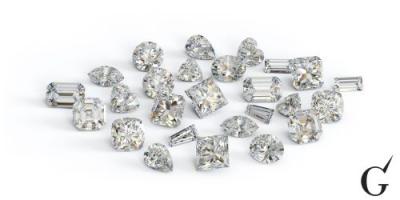Characteristics of Platinum
Platinum, one of the rarest and most valuable metals on Earth, has captivated humanity for centuries due to its impressive set of unique characteristics. Used in jewelry, catalytic converters, and even spacecraft equipment, platinum is versatile and essential in many sectors. Let’s delve into the distinctive properties of this precious metal.
1. Rarity and Source
Platinum is significantly rarer than gold. Every year, only about 160 tons of platinum are mined compared to approximately 1,500 tons of gold. Most of the world's platinum comes from South Africa, followed by Russia and Zimbabwe.
2. Physical Properties
- Color and Luster: Platinum is naturally white and maintains its color for a lifetime, unlike white gold that requires rhodium plating to achieve and maintain its whiteness.
- Density: Platinum is heavy and dense, with a significant weight that is noticeably different from other metals. This density contributes to its durability and heft in jewelry.
3. Durability and Strength
One of platinum's most recognized characteristics is its durability. While all metals can get scratched, the benefit of platinum is that it does not lose metal when scratched, unlike gold. Instead, the metal is merely displaced, which means platinum jewelry can be handed down through generations with minimal loss in metal weight.
4. Chemical Properties
- Non-reactivity: Platinum does not tarnish or corrode, and it does not react with oxygen at any temperature, ensuring it will not oxidize and lose its lustrous appeal.
- Catalytic Abilities: Its excellent catalytic properties make platinum essential in the automotive industry as a key component of catalytic converters, which reduce harmful vehicle emissions.
5. Hypoallergenic
Platinum is a hypoallergenic metal, making it an ideal choice for people with sensitive skin or allergies to metals such as nickel.
6. Purity
In jewelry, platinum is often 95% pure, which is significantly higher than 18k gold which is 75% pure. This high purity level enhances its hypoallergenic properties and ensures a naturally bright, white color without the need for alloying with other metals.
7. Malleability and Ductility
Despite its strength, platinum is malleable and ductile. It can be drawn into a fine wire or hammered into a thin sheet without breaking. This property allows for intricate designs in jewelry and various industrial applications.
8. Melting Point
Platinum has a high melting point (1,768.3 degrees Celsius or 3,214.9 degrees Fahrenheit). This characteristic makes it suitable for high-temperature applications and is often used in laboratory equipment.
9. Electrical Conductivity
Although not as conductive as metals like silver or copper, platinum is still a good conductor of electricity. Its stability at high temperatures and non-reactive nature also make it a popular choice for certain electrical applications.
10. Alloying Abilities
Platinum can be alloyed with other metals to improve specific characteristics. For example, it can be combined with cobalt to enhance its hardness or with iridium to increase its durability.











